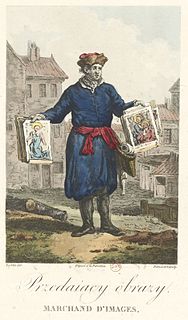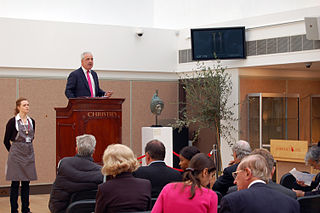In finance, discounted cash flow (DCF) analysis is a method of valuing a project, company, or asset using the concepts of the time value of money. Discounted cash flow analysis is widely used in investment finance, real estate development, corporate financial management and patent valuation. It was used in industry as early as the 1700s or 1800s, widely discussed in financial economics in the 1960s, and became widely used in U.S. Courts in the 1980s and 1990s.

The United States of America has separate federal, state, and local governments with taxes imposed at each of these levels. Taxes are levied on income, payroll, property, sales, capital gains, dividends, imports, estates and gifts, as well as various fees. In 2010, taxes collected by federal, state, and municipal governments amounted to 24.8% of GDP. In the OECD, only Chile and Mexico are taxed less as a share of their GDP.

In finance, valuation is the process of determining the present value (PV) of an asset. Valuations can be done on assets or on liabilities. Valuations are needed for many reasons such as investment analysis, capital budgeting, merger and acquisition transactions, financial reporting, taxable events to determine the proper tax liability.
Adjusted present value (APV) is a valuation method introduced in 1974 by Stewart Myers.
Market value or OMV is the price at which an asset would trade in a competitive auction setting. Market value is often used interchangeably with open market value, fair value or fair market value, although these terms have distinct definitions in different standards, and may or may not differ in some circumstances.
Real estate appraisal, property valuation or land valuation is the process of developing an opinion of value, for real property. Real estate transactions often require appraisals because they occur infrequently and every property is unique, unlike corporate stocks, which are traded daily and are identical. The location also plays a key role in valuation. However, since property cannot change location, it is often the upgrades or improvements to the home that can change its value. Appraisal reports form the basis for mortgage loans, settling estates and divorces, taxation, and so on. Sometimes an appraisal report is used to establish a sale price for a property.
The Rothko case was the protracted legal dispute between Kate Rothko, the daughter of the painter Mark Rothko; the painter's estate executors; and the directors of his gallery, Marlborough Fine Art. The revelations in the case of greed, abuses of power and conspiracy by financial interests in the art world were described by the New York Court of Appeals, the highest court of New York state, as "manifestly wrongful and indeed shocking," serving as a cautionary tale for both artists and their gallerists.
Comparables is a real estate appraisal term referring to properties with characteristics that are similar to a subject property whose value is being sought. This can be accomplished either by a real estate agent who attempts to establish the value of a potential client's home or property through market analysis or, by a licensed or certified appraiser or surveyor using more defined methods, when performing a real estate appraisal.
Business valuation is a process and a set of procedures used to estimate the economic value of an owner's interest in a business. Valuation is used by financial market participants to determine the price they are willing to pay or receive to effect a sale of a business. In addition to estimating the selling price of a business, the same valuation tools are often used by business appraisers to resolve disputes related to estate and gift taxation, divorce litigation, allocate business purchase price among business assets, establish a formula for estimating the value of partners' ownership interest for buy-sell agreements, and many other business and legal purposes such as in shareholders deadlock, divorce litigation and estate contest. In some cases, the court would appoint a forensic accountant as the joint expert doing the business valuation.
An appraiser, is one who determines the fair market value of property, real or personal. In England the business of an appraiser is usually combined with that of an auctioneer, while the word itself has a similar meaning to that of "valuer".
Valuation using discounted cash flows is a method of estimating the current value of a company based on projected future cash flows adjusted for the time value of money. The cash flows are made up of the cash flows within the forecast period together with a continuing or terminal value that represents the cash flow stream after the forecast period.
In economics, valuation using multiples, or “relative valuation”, is a process that consists of:
Basis, as used in United States tax law, is the original cost of property, adjusted for factors such as depreciation. When property is sold, the taxpayer pays/(saves) taxes on a capital gain/(loss) that equals the amount realized on the sale minus the sold property's basis.

An art dealer is a person or company that buys and sells works of art. Art dealers' professional associations serve to set high standards for accreditation or membership and to support art exhibitions and shows.
The following outline is provided as an overview of and topical guide to finance:
The Income Approach is one of three major groups of methodologies, called valuation approaches, used by appraisers. It is particularly common in commercial real estate appraisal and in business appraisal. The fundamental math is similar to the methods used for financial valuation, securities analysis, or bond pricing. However, there are some significant and important modifications when used in real estate or business valuation.
The German income approach is the standard approach used in Germany for the valuing of property that produces a stream of future cash flows.

The art market is represented by a marketplace of buyers and sellers trading in the commodities, services, and works-of-art commonly associated with the various arts. The art market is also concerned with the production of new art which enters the art market. The art market is an example of one type of marketplace, among many different types of markets which occur in economics. In particular, the art market has many similarities with other marketplaces where buyers and sellers meet, as well as significant distinguishing factors indicative of its differences from other types of markets in economics.









